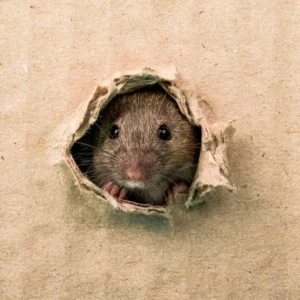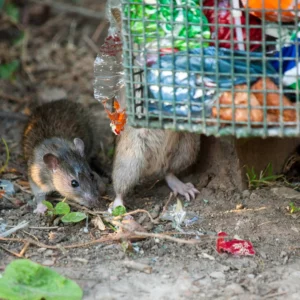
Rats are notorious for finding their way into places they shouldn't be, and rooftops are no exception. These clever creatures have a variety of surprising methods for making their way onto roofs, often catching homeowners off guard. In this article, we will explore some of the unexpected ways rats climb onto roofs and discuss strategies for preventing and removing them.
Rats are naturally skilled climbers, and trees are like a rat's personal highway to the rooftops. They use their sharp claws and agile bodies to navigate tree trunks and branches with ease. It is truly fascinating to observe their dexterity and grace as they effortlessly move through the treetops.
When it comes to tree climbing, rats have developed some impressive techniques. They have a keen sense of balance, allowing them to traverse even the thinnest of branches without losing their footing. Their tails act as a counterbalance, providing stability and helping them maintain their grip on the tree.
Essential tips for safe and successful tree climbing include:
While tree climbing may seem like an innocent pastime for rats, it can quickly become a nuisance for homeowners. Rats can cause damage to roofs, chew through electrical wires, and even spread diseases. Taking proactive measures to discourage climbing is essential in preventing a rooftop rat invasion.

Imagine standing beneath a towering tree, marveling at the intricate network of branches and leaves above you. The rustling sound of the wind through the leaves creates a soothing melody, while the sunlight filters through the canopy, casting a beautiful dappled pattern on the ground below. It is in this serene environment that rats find solace and adventure, using their climbing skills to explore the world around them.
As rats ascend the tree, their nimble bodies effortlessly navigate the complex maze of branches. They jump from one branch to another, displaying remarkable agility and coordination. Their sharp claws dig into the bark, providing a secure grip as they ascend higher and higher.
Tree climbing is not just a means of transportation for rats; it is a way of life. The treetops offer a plethora of food sources, from juicy fruits to succulent nuts. Rats are opportunistic eaters, and the abundance of food found in trees provides them with a constant supply of sustenance.
Furthermore, tree climbing is an essential skill for rats to evade predators. By taking to the trees, they can escape the clutches of ground-dwelling predators and find safety in the heights. It is truly remarkable how rats have adapted to their environment, utilizing their climbing abilities to survive and thrive.
So, the next time you spot a rat scurrying up a tree, take a moment to appreciate the artistry of their climbing skills. It is a testament to their adaptability and resourcefulness in the face of challenges. And remember, while rats may be impressive climbers, it is crucial to take measures to prevent them from becoming a nuisance in our homes.
Rats are not deterred by heights, and powerlines provide them with another route to rooftops. However, climbing powerlines is extremely dangerous for both rats and humans. Understanding the risks and consequences of climbing powerlines is crucial:
One of the primary dangers of powerline climbing is the risk of electrocution. Rats, with their nimble bodies, can inadvertently touch live wires while attempting to navigate the powerlines. This contact with electricity can lead to fatal electrocution, not only for the rats but also for unsuspecting humans. The consequences of such accidents can be severe, posing a significant risk to homeowners and potentially causing power outages that can disrupt the lives of many.
Another peril associated with powerline climbing is the potential for fire hazards. Rats, known for their incessant gnawing behavior, may find electrical wires particularly enticing. Their constant chewing can damage the insulation surrounding the wires, exposing the live components within. This creates a fire hazard, as the exposed wires can spark and ignite nearby flammable materials. The resulting fires can cause extensive damage to the electrical infrastructure, leading to power outages and endangering the lives of those in the vicinity.
Given the inherent dangers of powerline climbing, it is essential to educate thrill-seekers about the risks involved and promote safe alternatives for adrenaline junkies to satisfy their craving for adventure. Engaging in activities that do not pose a threat to personal safety or the well-being of others is paramount. Exploring nature trails, participating in organized sports, or engaging in rock climbing under professional supervision are just a few examples of exhilarating activities that can provide the same rush without the life-threatening risks associated with powerline climbing.
Furthermore, raising awareness about the potential consequences of powerline climbing is crucial in preventing accidents and protecting both humans and wildlife. By highlighting the dangers and emphasizing the importance of responsible behavior, we can encourage individuals to make informed choices and avoid engaging in activities that put themselves and others at risk.
In conclusion, powerline climbing is an extremely hazardous activity that poses risks of electrocution and fire hazards. It is imperative to spread awareness about these dangers and promote safe alternatives to ensure the well-being of both humans and rats. By educating thrill-seekers and emphasizing responsible behavior, we can help create a safer environment for all.

Some rats are resourceful enough to climb the vertical surfaces of houses themselves. This method presents its own set of challenges and risks. Safely climbing and cleaning hard-to-reach areas of your home can be achieved by following these guidelines:
While it may be tempting to take matters into your own hands, it is crucial to prioritize safety when scaling your home's surfaces.
When it comes to scaling the surfaces of your home, it is important to understand the potential risks involved. Rats, being resourceful creatures, have been known to climb vertical surfaces, including the walls of houses. This not only poses a threat to the structural integrity of your home but also increases the chances of a rat infestation. Therefore, it is essential to take proactive measures to ensure the safety and cleanliness of your home.
One of the key guidelines to follow when scaling your home's surfaces is to use proper safety equipment. This includes harnesses and safety ropes, which can prevent falls and injuries. By securing yourself with these tools, you can confidently navigate the heights of your home without putting yourself at risk. Additionally, it is crucial to ensure that the safety equipment is in good condition and properly maintained to guarantee its effectiveness.
Another important aspect to consider is starting from a stable surface and gradually working your way up. This means carefully assessing each step before proceeding to the next. By doing so, you can ensure that each foothold is secure and stable, minimizing the chances of accidents or falls. It is advisable to inspect the surfaces you plan to scale beforehand, checking for any loose or unstable areas that may pose a risk.
While some homeowners may feel confident in their ability to scale their home's surfaces, it is worth considering professional services for high-altitude work. These professionals are trained and equipped to handle such tasks safely and efficiently. By hiring experts in the field, you can have peace of mind knowing that both your safety and the exterminators' safety are prioritized. Professional services also have the advantage of specialized equipment and techniques that can make the scaling process more effective.
It is important to note that safety should always be the top priority when it comes to scaling the surfaces of your home. Taking matters into your own hands without proper precautions can lead to accidents, injuries, or even further damage to your property. By following the guidelines mentioned above and considering professional help when needed, you can ensure a safe and successful scaling experience.
When it comes to urban areas, rats have mastered the art of climbing not only buildings but also unconventional structures like garbage cans. Scaling garbage cans allows rats to access rooftops and potentially find a way into homes. Here are some tips for unleashing your inner urban climber and scaling garbage cans:
Understanding the dos and don'ts of climbing urban structures, including garbage cans, can help homeowners prevent rat infestations and minimize potential risks.

Discovering rats on your roof can be an unsettling experience. These unwelcome visitors can cause property damage, contaminate food, and pose health risks. Preventing and removing rats from your roof is essential for maintaining a safe and healthy home environment. Here are some steps you can take:
Recognizing the signs of a rat infestation, such as droppings or scratching noises, and taking immediate action is crucial in preventing further damage and ensuring the well-being of your household.
Rats are resourceful creatures with surprising methods of accessing rooftops. From tree climbing to powerline scaling, these rodents can quickly become a nuisance for homeowners. Employing preventive measures and being proactive in removing rats from your roof can help maintain a safe and pest-free living environment. By understanding and addressing the different ways rats infiltrate roofs, you can protect your home and family from these unwelcome visitors.